Simple Plate or Elaborate Collectible? – Sago Bowls
PRIMITIVE - Thursday, July 10, 2014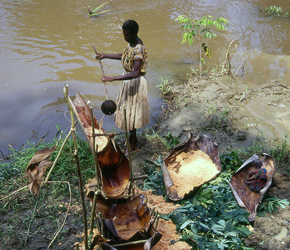 |
|
Photo credit: Dr. John Tyman, Cultures in Context |
By Misaki Imagawa
It’s desert time! Summer is finally here, so how about some chilled sago pudding topped with pineapple slices, passion fruit, and a subtle hint of lemon syrup? But wait, what is sago? We learn something new every day: sago looks and tastes very similar to tapioca but is really something entirely different. Tapioca is a starch taken from cassava roots mainly in tropical areas of South America, while sago is starch extracted from trunks of sago palm trees in Southeast Asia. Although tapioca is more commonly known, an intriguing culture and art form revolving around sago can be found among the Sawos people of Papua New Guinea.
 |
|
Sago starch is an important dietary component of the people living along the Sepik River that runs through Papua New Guinea. It is used for puddings, breads, noodles, and pancakes. Here’s a tidbit for food conscious readers – sago has little nutritional value. The locals get their vitamins from other sources such as traded meat and fresh fish from the river. In order to prepare, cook and serve sago, traditional pottery dishes are crafted in a collaborative effort by men and women. The most prominent of these dishes is the kamana, or the sago eating dish, a conical vessel with an intricately decorated exterior. PRIMITIVE actually has a wonderful collection of kamana, and as an aside they look wonderful mounted on the wall, like plates.
The process of making kamana is a joint effort between men and women. Women first create the bowl with soft clay, coiling up thin strands in the shape of the dish and smoothing the sides. Once dried, the men polish the inside of the bowl and use a chip-carving technique to decorate the outside with shallow reliefs. The women then low-fire the pottery; and men complete the process by painting the bowls with natural pigments of red, yellow and white.
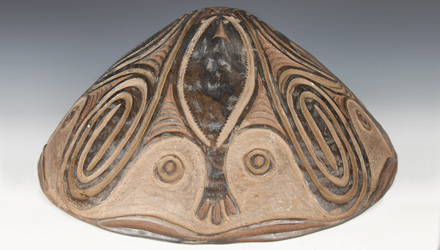 |
The patterns incised on the exterior are often geometric and curvilinear – designs inspired by the natural world. At times they can depict the face or form of a spiritual being as well as iconic designs endemic to the people. Nevertheless, intricately carved kamana are not necessarily ceremonial bowls, but instead, everyday dishes. When in use, the bowl is held upright by a ring of plaited cane to accommodate its cone-shaped form. When not in use, kamana are placed in an upside down or inverted position so the designs can be appreciated.
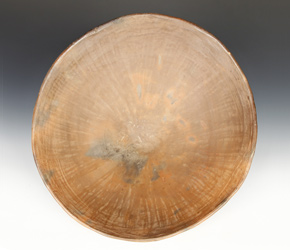 |
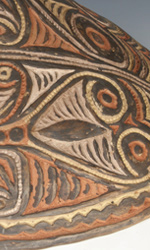 |
Perhaps a fruit and syrup topped desert is not what kamana were traditionally meant to serve, but the connection between cuisine and art is really served up by these bowls at PRIMITIVE. No two sago bowls look alike, but the smooth lines, intriguing designs, and earth tones make them all engaging and attractive. Their distinctive appearance is one reason they are becoming increasingly sought after by collectors and enthusiasts alike. Although early collections of sago bowls date back to the beginning of the 20th century, a comparison of kamana made today and those a century before show very little difference in style, design or craftsmanship. The creation of these bowls is a revered, respected art form passed down through generations and masterfully practiced by the Sawos people. Over time, their exceptional quality has remained constant; and it should be noted, they have not been produced for the tourist market, but instead, for use by the people themselves. Perhaps that is what makes sago bowls true collectibles – and all the more precious today.
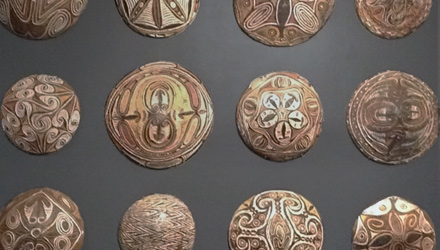
|
|
Download this Article: Simple Plate Or Elaborate Collectible.pdf